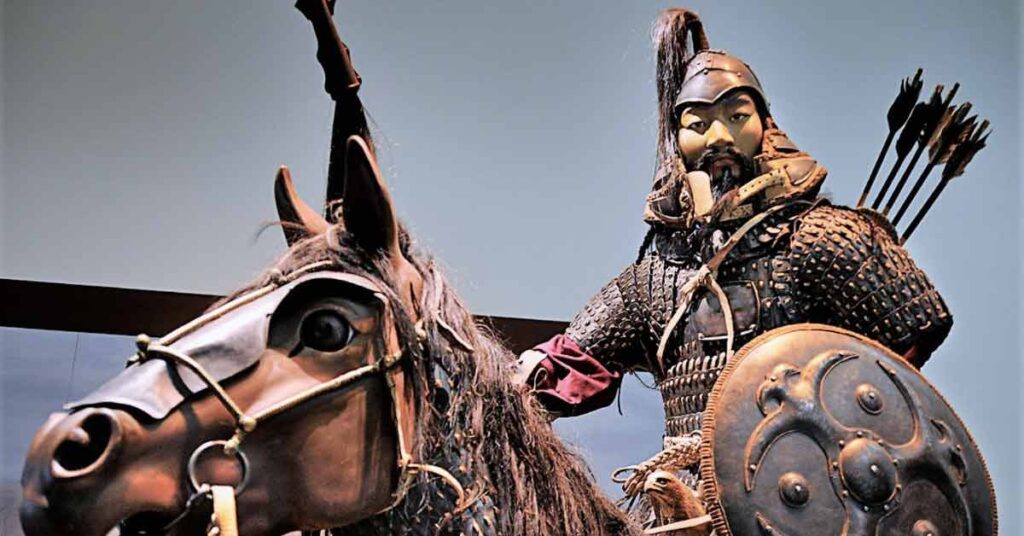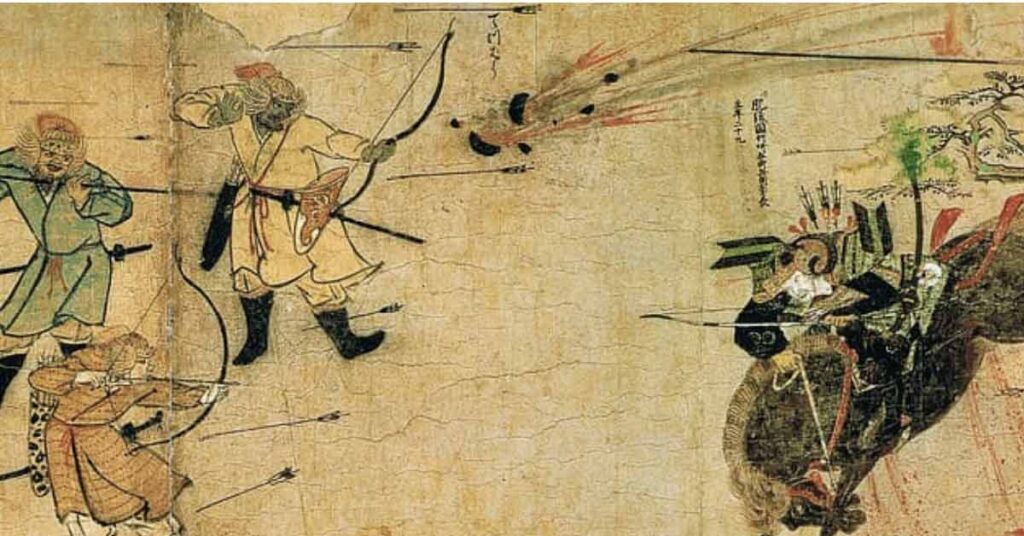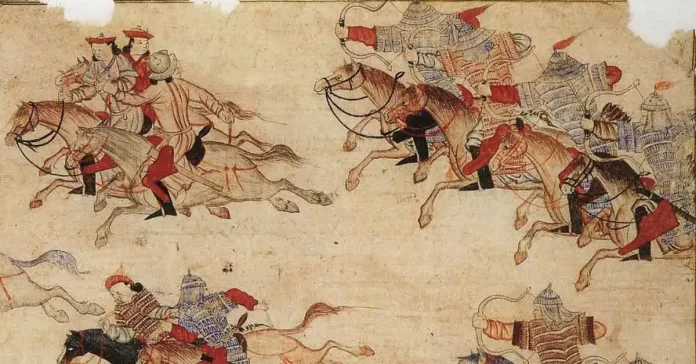Snub Led Genghis khan to the Fall of Empire: Outreinfo- New hot topic
In the early 13th century, Genghis Khan, the leader who united Central Asia’s tribes and built the largest land empire in history, aimed to establish peaceful trade relations with the neighbouring Khwarazmian Empire. This powerful Muslim state encompassed vast territories in present-day Iran, Uzbekistan, and Turkmenistan and was ruled by Shah Ala ad-Din Muhammad II.
False Accusations and the Caravan Massacre
In pursuit of his goal, Genghis Khan dispatched a caravan of Muslim merchants to the Khwarazmian city of Otrar in 1218. However, the governor of Otrar, Inalchuq (also known as Ghiyas ad-Din), unfoundedly accused the caravan members of being spies. Despite their vehement protests of innocence, the governor ordered their arrest. Shockingly, the entire caravan, except for one survivor who managed to escape, was executed under the governor’s command.
Genghis Khan’s Response: Invasion Unleashed
The sultan of the Khwarazmian Empire further escalated tensions by executing a caravan of Mongol traders. In the face of these grave provocations, Genghis Khan made the fateful decision to invade the Khwarazmian Empire. This act of retribution was fueled by the survivor who escaped the massacre and brought news of the tragic events back to Genghis Khan.
In summary, the tale of Genghis Khan’s retribution against the Khwarazmian Empire stands as a stark reminder of how a small spark, such as an insult or a show of disrespect, can ignite a brutal war. Driven by his ambition for peaceful trade and met with false accusations and a merciless caravan massacre, Genghis Khan unleashed his military might upon the Khwarazmian Empire in a quest for vengeance.

Genghis Khan’s Merchants Mistreated
Outraged by the unjust treatment inflicted upon his merchants, Genghis Khan took decisive action. He initiated a diplomatic mission to the Khwarazmian Shah, Muhammad II, in order to seek justice for the incident. Genghis Khan demanded the punishment of the governor of Otrar for his actions and sought reparations for the lives lost and properties damaged during the ordeal.
Diplomatic Mission Ends in Tragedy
Unfortunately, instead of addressing Genghis Khan’s grievances, the Shah chose to add insult to injury. Not only did he refuse to comply with Genghis Khan’s demands, but he also escalated the situation. In a shocking act of provocation, the Shah ordered the beheading of the chief envoy of the diplomatic mission and sent his severed head back to the Mongols, deepening the already festering wound of outrage.
Genghis Khan’s Diplomatic Mission
In the early 13th century, Genghis Khan, the charismatic leader who successfully united the tribes of Central Asia and established the largest land empire in history, aspired to foster peaceful trade relations with the neighboring Khwarazmian Empire. This influential Muslim state ruled over extensive territories, encompassing present-day Iran, Uzbekistan, and Turkmenistan, under the leadership of Shah Ala ad-Din Muhammad II.
The Provocation: False Accusations and the Caravan Massacre
In pursuit of his objective, Genghis Khan dispatched a caravan of Muslim merchants to the Khwarazmian city of Otrar in 1218. Tragically, the governor of Otrar, Inalchuq (also known as Ghiyas ad-Din), without evidence or justification, accused the members of the caravan of espionage and swiftly ordered their arrest. Despite their unwavering claims of innocence, the governor callously executed the entire caravan, sparing only one survivor who managed to escape and deliver the dreadful news of the massacre to Genghis Khan.
Retribution: Genghis Khan’s Response
Enraged by the merciless slaughter of his merchants, Genghis Khan resolved to take action. The news of the caravan massacre served as a catalyst, propelling him towards his fateful decision to unleash his wrath upon the Khwarazmian Empire. This pivotal event marked the beginning of a relentless pursuit of retribution, as Genghis Khan set his sights on dismantling the powerful empire that had perpetrated such an atrocious act.
Diplomatic Mission and Insult: Genghis Khan’s Pursuit of Redress
Outraged by the mistreatment inflicted upon his merchants, Genghis Khan made a crucial decision. He dispatched a diplomatic mission to Khwarazmian Shah Muhammad II, seeking redress for the unjust incident. Genghis Khan demanded punishment for the governor of Otrar, accountable for his actions, and sought reparations for the loss of lives and property. However, the Shah not only rejected Genghis Khan’s demands but also added insult to injury by beheading the chief envoy of the diplomatic mission and sending the severed head back to the Mongols.
The Brutal Invasion: Unleashing the Mon’ol Fury
Genghis Khan’s response to the Shah’s egregious act of defiance was swift and merciless. In 1219, the Mongols initiated a pivotal invasion of the Khwarazmian Empire. Over the course of two relentless years, the Mongols executed a brutal and decisive campaign that resulted in the annihilation of the empire. The extent of the carnage was staggering, with estimates suggesting that millions of lives were lost, including countless women and children. To illustrate the magnitude of the violence, the 13th-century Persian scholar Atâ-Malek Juvayni described an order given to 50,000 Mongol soldiers, directing them to each kill 24 citizens of Gurganj, a city within the Khwarazmian Empire. While the accuracy of this account remains uncertain, it serves as a chilling testament to the scale of destruction inflicted.

Legends and Uncertainties
The legacy of Genghis Khan, the Khan of Khans, is shrouded in legends and tall tales. While historical evidence exists about the Mongol invasion and its brutality, the exact origins of the conflict remain elusive. Anecdotes abound, such as Genghis Khan killing his half-brother over food or turning an enemy archer into a trusted general. Yet, the accuracy of these stories is uncertain, as historians grapple with the limited surviving sources and the biases of those who recorded them.
Patchwork of Historical Accounts
Surviving accounts of Mongol conquest, including those about Genghis Khan himself, were often written years after the events took place. This temporal gap leaves room for rumor and revisionism to influence the narratives. Historians must carefully consider the perspective of the authors, whether they were aligned with or opposed to the Mongols. While the decimation of Khwarazmia aligns with the commonly told story, there are minor differences. Nevertheless, lingering questions remain, such as why the Khwarazmians, outnumbered and outplayed, engaged in a conflict with the formidable Mongols.
Speculations and Motives
The reasons behind Khwarazmia’s decision to confront the Mongols remain uncertain. It is unclear whether they underestimated their opponents, overestimated themselves, or believed that the Mongols, who had already conquered neighboring territories, would eventually target them. The desire for a final stand against the Mongols may have motivated their actions. Unfortunately, definitive answers to these lingering questions remain elusive.
The Provocation: Arrest and Execution
In 1219, a caravan arrived in the city of Utrar for trade, only to be arrested by Governor Inalchuq. Seeking guidance, Inalchuq turned to Khwarazmian Sultan Ala ad-Din Muhammad II, who ordered the execution of the Mongol traders. Enraged, Genghis Khan sent an envoy to demand an explanation, but Muhammad responded by executing the envoy and humiliating his followers by cutting off their beards.
The Siege and Brutal Revenge
In response to Muhammad’s actions, Genghis Khan unleashed his army upon Utrar. The city was besieged, and Inalchuq met a gruesome fate as molten metal was poured into his mouth, eyes, and ears—an atypical method for the Mongols. The reasons behind this choice remain unclear, but it may have been a means to mock Inalchuq’s greediness or the customs of his people, drawing parallels to historical incidents involving Roman figures.
The Consequences: Total Devastation
With the fall of Utrar, the rest of Khwarazmia quickly succumbed to the Mongols’ ruthless onslaught. The invasion set a new standard of cruelty, with conservative estimates placing the death toll between 2 and 15 million people. Although some claim that Sultan Muhammad met his demise on a small island in the Caspian Sea, surrounded by Genghis Khan’s soldiers, it is important to note that the Mongols had actually missed him, moving further westwards at the time.
Unanswered Questions: Motives and Provocations
Despite the presence of reasonably reliable primary sources, the motives behind Muhammad and Inalchuq’s actions in the Utrar incident remain elusive. It is puzzling why they would choose to antagonize the formidable Mongols, considering Genghis Khan’s already established reputation as a conqueror who had recently subjugated territories like northern China and Qara Khitai.
Strategic Considerations
The proximity of Qara Khitai, a neighbouring empire that had fallen to the Mongols, should have made Muhammad more cautious in his dealings with Genghis Khan. In fact, he had just halted a major invasion against the Abbasid caliph in Baghdad, possibly due to the rising Mongol presence in the region. It seems counterintuitive that Muhammad would risk provoking the Mongols, given these circumstances.
Curious Circumstances
The Utrar incident becomes even more intriguing when considering that the Mongols likely had no initial intentions of conquering Khwarazmia. The trading caravan that arrived in Utrar sought to exchange goods, indicating Genghis Khan’s interest in Khwarazmian fabric, which showcased his openness to cultural and religious diversity in the territories he occupied.
In summary, the motivations behind Muhammad and Inalchuq’s decision to provoke the Mongols in the Uttar incident remain unanswered. Despite Genghis Khan’s formidable reputation and the neighboring fall of Qara Khitai, Muhammad seemingly took a risk by antagonizing the Mongols. The incident becomes more perplexing when considering the peaceful intent of the trading caravan and Genghis Khan’s appreciation for Khwarazmian fabric.
Provoking the Wrath of Genghis Khan
The reasons behind Muhammad’s decision to provoke Genghis Khan remain speculative. One possibility suggested by The Mongol Storm is that an Indian merchant accompanying the caravan may have insulted Inalchuq, the governor of Utrar. However, this theory fails to explain why the governor arrested the Mongol traders and why the Sultan ordered the execution of both the traders and the envoy. Greed as a motive seems unlikely, as Utrar was a prominent city on the Silk Roads with wealthier targets and more valuable goods available.
A Message to Genghis Khan
The most convincing explanation is that Inalchuq believed the Mongol traders were spies, leading to their arrest, and Muhammad, foreseeing an inevitable conflict with the Mongols, ordered their execution to send a message to Genghis Khan. The Sultan may have viewed the rapid Mongol conquests as a threat and wanted to act decisively to counter any potential spying. None of these theories, however, provide a fully satisfactory explanation.
The Inevitable Encounter
Amid the Mongols’ expansive movements in all directions, it was inevitable that the Khwarazmians would eventually have to submit to Genghis Khan’s rule, whether through war or peace. By refusing to accept this fate, Muhammad II unwittingly opened the door for the Khan of Khans and his soldiers to march into the Near East and, subsequently, Europe. The full story of these events lies beyond the scope of this account.
To read more articles on new hot topics – Click here

